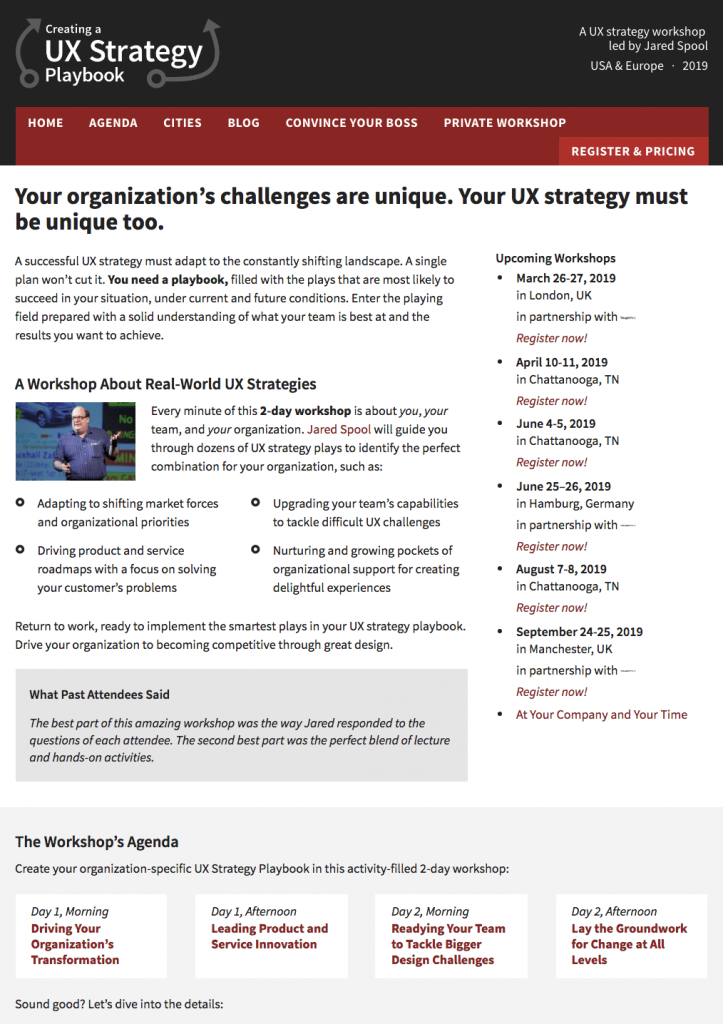Case Study: Creating a UX Strategy Playbook is a workshop about real-world UX strategies for the purpose of creating a team’s custom UX Playbook. Creating a UX Strategy Playbook, the workshop is designed to drive organizational transformation, facilitate leading product & service innovation.
(I cannot recommend this workshop more strongly – it was truly transformational)
Challenges:
- I was charged with leading our team to gain design maturity.
- Tackle bigger design challenges through the workshop learnings.
- Present and facilitate the workshop to team at XWP
Strategy: Recreate the lessons and facilitate the workshop with our design team at XWP. Develop the company design strategy for the business which is unique from the tactics executed. Record the internal workshop for larger teams to benefit from as well.
Tactics:
- Continuous discovery
- Facilitation
- Research
- Expert analysis
- Workshops
- Identify through collaboration the top Plays to secure a useful Design Strategy

Below is a list of some of the work achieved through the workshop:
- Use journey maps, critiques, and design studios to bring out everybody’s inherent design skills
- Communicate the value of design to executives and stakeholders by socializing a solid vision of future user experiences
- Connect the decisions of key influencers to their effects on customer experiences
- Convert product strategy from building new features to solving critical customer problems
- Integrate pleasure, flow, and meaning into the product definition, to infuse delight into the overall delivery strategy
- Recruit top talent to fill in the team’s skill gaps, using performance-based hiring to ensure every new hire is a perfect fit
- Increase the skills of your non-designer influencers, focusing decisions on what’s best for the customers
- Institute novel mentorship programs to propagate design skills and resources across the entire organization
- Choose from more than 125 proven plays to create a playbook unique to your needs
- Assess each possible play based on impact to the organization and feasibility to execute
- Identify strengths and weaknesses in your organization, playing into your strengths and upgrading where your weak
- Start with the end in mind: envision what success looks like, so you’ll know what you’re reaching for
- Create a “sales plan” that maps the most effective plays to critical organizational challenges, to sell your playbook to key stakeholders
- Construct your essential to-do list, with the first pivotal steps you’ll execute for each play
Leave a Reply